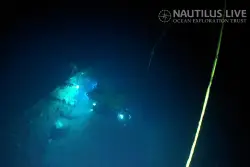Majority of local residents see Tijuana River sewage as threat to air, water, health

Workers touching base with South Bay residents as part of federal outreach regarding Tijuana River Valley pollution. (Photo courtesy of County News Center) South Bay residents have serious concerns about air quality, drinking water and their health as they continue to live with the Tijuana River pollution crisis, according to survey results released Tuesday. The Assessment of Chemical Exposures survey, based on answers from 2,099 people near the border, was conducted last November by the U.S. Centers for Disease Control and Prevention’s Agency for Toxic Substances and Disease Registry. Of those who filled out questionnaires, 97% said they were concerned about air quality and 96% about beach water quality. Another 94% cited concerns over Tijuana River quality and 86% over the cleanliness of drinking water. A total of 80% said they have made many or some lifestyle changes due to the sewage and taken steps to avoid the area. A full 67% of those surveyed said they do not believe the area is safe to visit, work or live. Other findings include: 70% of the respondents use bottled water for drinking water and only 21% drink tap water. 64% reported at least one new or worsening physical symptom they attributed to the sewage crisis in the 30 days before the survey: headaches, runny nose, congestion and coughing were the most common. More than 60% of parents answering for children said their child had missed classes due to symptoms they believe are related to the sewage crisis. 25% of participants believe their pets’ ailments to be linked to the sewage crisis. The pets have symptoms like skin, ear or eye issues or respiratory, cardiac or digestive problems. The areas in this survey were expanded from Imperial Beach, Nestor and San Ysidro to include Otay Mesa West, the Silver Strand and Coronado. Just shy of half the respondents were Hispanic/Latino and 41% white; 86% said they live in the area, 31% say they visit for recreational activities, 21% work there and 16% attend school. The results of the ACE survey confirm those of another study, the Community Assessment for Public Health Emergency Response, completed last October. The county also explained that the ACE survey expanded participation to individuals rather than households. Concerns about physical and mental health and the safety of the community and of tap water for drinking were common to both surveys. The survey area for the CDC’s Assessment of Chemical Exposures. (Photo courtesy of San Diego County) The county said it will prioritize action in five areas after receiving the survey results: Communication – share health and resource information in multiple formats including on social media and via community outreach workers. Water – educate the community about how household drinking water is tested and not sourced from the Tijuana River. Mental health – promote mental health services and resources. Healthcare providers – update clinicians on surveillance activities and ongoing projects. Pets – engage with vets, hospitals and area animal organizations. In September 2024, teams from local universities measured high levels of noxious gases such as hydrogen sulfide and hydrogen cyanide in the Tijuana River Valley. Residents were exposed to the rotten egg smell even miles from the border. Ultimately, crews from San Diego County determined there was no immediate health risk, but many residents believed the crisis had reached a turning point. “In the past year, researchers discovered that toxins and bacteria from the Tijuana River can be aerosolized and become airborne – unveiling an apparent threat not only to our water ecosystems, but the air in our communities,” members of San Diego County’s congressional delegation wrote in a letter to the Environmental Protection Agency. Last month, the San Diego County Board of Supervisors voted 3-1 to advance a proposed action plan in response to the ongoing Tijuana River sewage crisis. Imperial Beach Mayor Paloma Aguirre on July 1 won election to the board, bringing her activism regarding the border to the county’s decision-making process. Another public health assessment from the CDC’s Agency for Toxic Substances and Disease Registry will evaluate the river valley for hazardous substances, health outcomes and community concerns. It is expected to take about two years. “This new public health assessment will look at environmental data from government agencies and researchers, review air, surface water, sediment, soil, fish tissue and odor complaint data, identify information gaps and uncertainties where there is not enough data to determine health risks and make recommendations to agencies, community members, and others to prevent and minimize harmful exposures,” according to a county statement.


